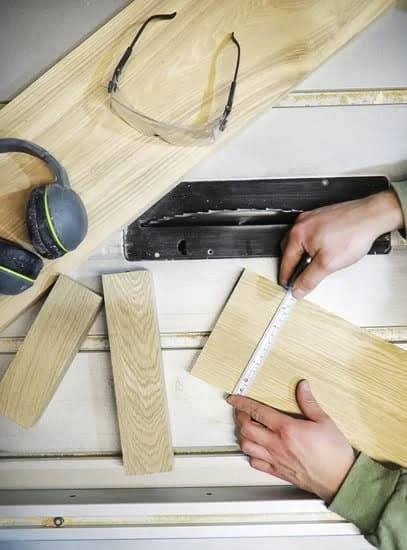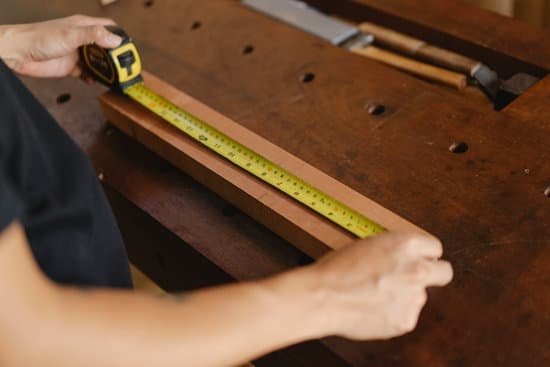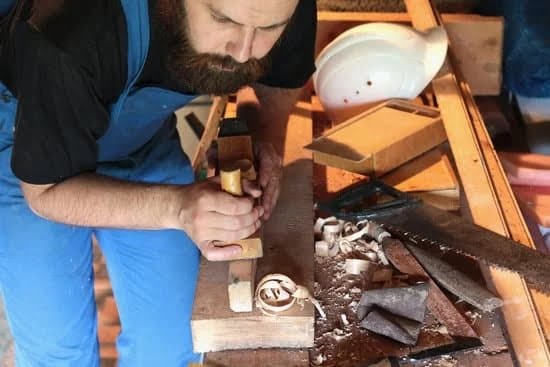Woodworking is a gratifying and fulfilling hobby that allows individuals to unleash their creativity and craftsmanship. Whether you’re interested in building furniture, crafting intricate wooden designs, or simply working with your hands, woodworking offers a rich and rewarding experience. In this article, we will explore the joys and rewards of woodworking as well as provide guidance for beginners on what to buy when starting their woodworking journey.
Woodworking has gained increasing popularity in recent years as more people rediscover the satisfaction of creating something tangible with their own hands. The act of transforming raw pieces of wood into functional or decorative objects brings a sense of accomplishment like no other. From the smell of freshly cut wood to the sound of sawing through lumber, every step in the woodworking process is filled with joy and excitement.
Moreover, woodworking offers numerous benefits beyond personal satisfaction. It provides an opportunity to develop new skills, improve hand-eye coordination, and enhance problem-solving abilities. Additionally, it serves as a form of relaxation and stress relief, allowing individuals to immerse themselves in a meaningful and productive activity.
Whether you’re a complete novice or have some experience under your belt, getting started with woodworking requires having the right tools at your disposal. In the next sections, we will delve into the essential tools for beginners, discuss how to set up a woodworking workshop, explore safety gear requirements, introduce different types of wood commonly used in projects, highlight fundamental techniques for beginners to master and provide recommendations on accessories and supplies.
With this comprehensive guide at your fingertips, you can embark on your woodworking journey with confidence.
The Essential Tools for Woodworking Beginners
Woodworking is a rewarding and fulfilling hobby that allows individuals to create beautiful wooden masterpieces with their own hands. For beginners looking to embark on their woodworking journey, it is important to have the essential tools that will set them up for success. In this section, we will delve into the must-have tools for woodworking beginners, covering their uses and importance.
One of the most basic yet essential tools for woodworking beginners is a miter saw. This versatile saw allows for precise angle cuts and is perfect for making accurate crosscuts and miter joints. Combined with a sturdy workbench or sawhorse, a miter saw becomes an indispensable tool in any woodworking workshop.
In addition to a miter saw, chisels are another must-have tool for beginners. Chisels are used for carving and shaping wood, making them crucial in various woodworking projects. They come in different sizes to cater to different needs, from delicate detailing to heavy-duty chopping.
A hand plane is also an essential tool that every beginner should have in their arsenal. Hand planes are used to smooth surfaces and remove imperfections in wood. They are particularly helpful in achieving flat and even surfaces on boards, ensuring a professional finish on projects.
Lastly, a tape measure is an important measuring tool that should not be overlooked by beginners. Accurate measurements are crucial in woodworking, as even small discrepancies can greatly affect the overall outcome of a project. A quality tape measure ensures precision and helps avoid costly mistakes.
While these hand tools form the foundation of any beginner’s toolkit, power tools can also greatly enhance the woodworking experience. Some power tools that beginners may consider investing in include a drill press, jigsaw, or table saw. These power tools can help speed up tasks and add versatility to projects.
| Tool | Description |
|---|---|
| Miter Saw | A versatile saw for precise angle cuts and accurate crosscuts |
| Chisels | Used for carving and shaping wood in various sizes |
| Hand Plane | Smooths surfaces and removes imperfections in wood |
| Tape Measure | A measuring tool for accurate measurements in woodworking projects |
Having these essential tools will give beginners the foundation they need to start their woodworking journey on the right foot. As they gain more experience and tackle more complex projects, they can expand their tool collection to include additional power tools. Remember, starting with the basics and gradually building up your arsenal is the key to success in woodworking.
Setting Up Your Woodworking Workshop
Creating a dedicated space for woodworking is essential for enthusiasts who are starting their woodworking journey. Having a well-organized and properly equipped workshop will not only enhance your efficiency but also contribute to the safety and satisfaction of your woodworking projects. In this section, we will discuss the importance of a dedicated workspace, how to choose a suitable area, and offer tips on organizing and maintaining a safe and clutter-free workshop environment.
The Importance of a Dedicated Workspace
Having a dedicated workspace for woodworking allows you to have all your tools and equipment easily accessible in one place. It also provides an opportunity to create an environment that inspires creativity and focus. Whether it’s a spare room, a garage, or a shed, having a designated area where you can retreat to solely focus on your woodworking projects will greatly enhance your productivity and overall enjoyment of the craft.
Choosing an Area and Setting Up Essential Tools
When choosing an area for your woodworking workshop, consider factors such as available space, lighting conditions, ventilation, and proximity to electrical outlets. A space that offers natural light can be beneficial when working with wood as it allows you to better see the grain patterns and colors. Adequate ventilation is also crucial for health reasons when working with sawdust and other potentially harmful particles.
Once you have identified a suitable area, begin by setting up the essential tools needed for woodworking beginners. This includes workbenches or sawhorses for supporting your projects, storage solutions such as shelves or cabinets for organized tool storage, and adequate lighting fixtures that provide sufficient illumination over your work surface. Consider investing in tool racks or pegboards to keep frequently used tools within easy reach.
Organizing and Maintaining Safety Standards
In addition to having the necessary tools in place, organizing your workshop is crucial for safety purposes. Keeping your workspace tidy by arranging tools systematically reduces the risk of accidents and makes it easier for you to locate specific tools when needed. Ensure that there is sufficient space between workstations to allow for comfortable movement and safe operation of tools.
It is also important to maintain a safe and clutter-free environment by regularly cleaning up sawdust, wood chips, and other debris. Sweep or vacuum the area after each woodworking session, paying extra attention to areas around power tools where dust tends to accumulate. Implementing good housekeeping practices not only reduces fire hazards but also creates a more pleasant working environment.
By setting up your woodworking workshop with careful consideration, you are investing in a welcoming space that supports your creativity, efficiency, and safety. Take the time to select an appropriate area, organize your tools properly, and maintain cleanliness standards. With a well-equipped workshop at your disposal, you will be ready to embark on your woodworking journey with confidence.
Safety First
Woodworking is a fulfilling and enjoyable hobby, but it is important to prioritize safety when embarking on this journey. As a beginner, it is crucial to have the right protective gear to ensure a safe working environment and avoid potential injuries. This section will detail the essential protective gear that woodworking beginners should invest in, provide guidance on their proper usage and maintenance, and emphasize the significance of prioritizing safety.
Essential Protective Gear
To protect yourself from potential hazards in woodworking, there are several pieces of protective gear that you should consider acquiring:
- Safety goggles: Protect your eyes from flying debris, dust particles, and wood chips. Choose goggles that fit comfortably and provide clear vision without distortion.
- Dust mask or respirator: Woodworking produces a significant amount of dust which can be harmful if inhaled. Invest in a dust mask or respirator to filter out airborne particles and maintain clean airways.
- Hearing protection: Power tools used in woodworking can produce loud noises that may damage your hearing over time. Use earmuffs or earplugs to protect your ears from excessive noise levels.
- Protective clothing: Wear long-sleeved shirts, pants, and closed-toe shoes to protect your skin and minimize the risk of injury from sharp tools or accidental spills.
Proper Usage and Maintenance
Using protective gear correctly is as important as having them in the first place. Here are some tips for proper usage and maintenance:
- Inspect your gear regularly: Check for any signs of wear or damage before each use. Replace any damaged equipment immediately to ensure optimal protection.
- Follow manufacturer guidelines: Read the instructions provided by manufacturers for each piece of protective gear. They often include specific directions for proper use and care.
- Ensure a good fit: Protective gear must fit properly to offer adequate protection. Adjust straps or ear cups to achieve a secure and comfortable fit.
- Clean and store properly: Regularly clean your protective gear according to manufacturer guidelines. Store them in a clean, dry place away from direct sunlight or extreme temperatures.
Emphasizing Safety
Prioritizing safety should be an inherent part of woodworking. Here are some additional tips to maintain a safe working environment:
- Keep your workspace clutter-free: Clear the area of any unnecessary tools or materials that may pose a tripping hazard or hinder your movement.
- Practice proper tool usage: Learn how to use each tool correctly to minimize the risk of accidents or injuries. Follow safety guidelines provided by tool manufacturers.
- Take breaks and stay hydrated: Woodworking can be physically demanding, so it’s important to take regular breaks and stay hydrated to avoid fatigue and potential accidents.
By investing in the right protective gear, using it properly, and maintaining a safe working environment, woodworking beginners can enjoy their craft with peace of mind. Remember, safety is paramount, so always prioritize protection when engaging in woodworking projects.
Types of Wood for Woodworking Projects
Wood selection is a crucial aspect of woodworking projects. Different types of wood offer distinct characteristics and properties that can greatly impact the outcome of your projects. In this section, we will introduce you to some commonly used woods in woodworking and provide recommendations on selecting the appropriate wood for your projects.
One popular type of wood frequently used in woodworking is oak. Oak is known for its durability and strength, making it an excellent choice for furniture making. It has a beautiful grain pattern that adds aesthetic appeal to any project. However, oak can be quite heavy, so if you are planning on working with large pieces of oak, make sure you have the necessary tools and equipment to handle it.
Another common type of wood is pine. Pine is known for its affordability and ease of use, making it popular among beginners. It has a light color with distinct knots and grains, which can lend a rustic charm to your projects. However, pine is softer than other hardwoods, so it may not be suitable for projects that require a high level of durability.
For those looking for a more exotic option, mahogany is often sought after for its beauty and rich reddish-brown color. It has excellent workability and finishes well, making it ideal for fine furniture and cabinetry. Keep in mind that mahogany can be expensive compared to other woods, so consider your budget before choosing this option.
When selecting wood for your projects, take into account factors such as the intended use of the final product, your skill level as a woodworker, and your budget. Remember to always choose high-quality lumber that is free from defects such as knots or warping. With proper care and attention to detail in selecting the right type of wood, you can ensure that your woodworking projects turn out beautifully and stand the test of time.
As you continue on your woodworking journey, don’t be afraid to experiment with different types of wood to find what works best for you and your projects. With practice, you will develop a keen eye for selecting the perfect wood that brings your woodworking visions to life.
Essential Woodworking Techniques for Beginners
Woodworking is a craft that requires a combination of skills and techniques to create beautiful and functional pieces. Whether you’re a beginner or an experienced woodworker looking to expand your knowledge, mastering essential woodworking techniques is crucial. In this section, we will explore some fundamental woodworking techniques that every beginner should know.
Measuring, Marking, and Cutting
One of the first skills that beginners should become familiar with is measuring and marking. Accurate measurements are essential for ensuring that your pieces fit together properly. Invest in a good quality tape measure and learn how to use it correctly. Additionally, marking tools such as pencils or marking knives can help you make precise markings on the wood.
Once you have measured and marked your wood, it’s time to cut. There are various cutting tools available depending on the type of cut you need to make. A handsaw is perfect for straight cuts, while a coping saw allows you to make intricate curved cuts. If you prefer power tools, a jigsaw or circular saw can be useful for larger projects.
Joinery Techniques
Joinery refers to the methods used to connect two or more pieces of wood together. There are several common joinery techniques that beginners should learn.
- Doweling: This technique involves drilling corresponding holes in two pieces of wood and inserting dowels to hold them together.
- Mortise and Tenon: It is a traditional joint where one piece has a slot (mortise) cut into it while the other piece has a matching protrusion (tenon) that fits into the slot.
- Biscuit Joint: Biscuit joints use small, oval-shaped wooden biscuits in slots created by a biscuit joiner, creating strong connections between two boards.
Sanding and Finishing
After assembling your project, sanding plays an important role in achieving a smooth surface before applying any finish. Start with coarse-grit sandpaper and gradually work your way up to finer grits for a polished result. Sanding not only enhances the appearance of your project but also prepares the wood surface for applying finishes.
When it comes to finishing, there are various options available, such as stains, paints, or clear topcoats like varnish or polyurethane. Before applying any finish, ensure that the wood is clean and free from dust by wiping it down with a tack cloth.
By familiarizing yourself with these essential woodworking techniques, you will be on your way to creating beautiful and functional pieces. Remember to start with simple projects that allow you to practice these techniques before moving on to more complex ones. With patience and practice, you’ll soon find joy and satisfaction in your woodworking journey.
Must-Have Accessories and Supplies for Woodworking Beginners
Accessories and supplies play a crucial role in enhancing woodworking projects. They not only aid in the construction process but also contribute to the overall quality and finish of the final product. As a woodworking beginner, it is important to have certain must-have accessories and supplies in your toolkit to ensure successful and satisfying results.
One essential accessory for woodworking beginners is clamps. Clamps are used to hold pieces of wood securely in place during gluing, assembly, or drying. They provide the necessary pressure to ensure tight and strong joints. It is recommended to have a variety of clamps of different sizes and types, such as bar clamps, pipe clamps, and spring clamps, to accommodate various project sizes and shapes.
Another indispensable supply for woodworking beginners is sandpaper. Sandpaper is used for smoothing surfaces and removing imperfections from wood. It comes in different grits, ranging from coarse to fine. Beginners should have a selection of sandpapers with varying grits, such as 80-grit for heavy sanding or shaping tasks and higher grits like 120-grit or 220-grit for achieving smoother finishes.
In addition to clamps and sandpaper, glues are vital supplies for woodworking beginners. Woodworking projects often require joining pieces together, and glue provides a strong bond that holds them firmly over time. For beginners, it is recommended to use wood glues that dry clear, have long open times (time before they set), and are easy to clean up if any excess squeeze-out occurs.
Lastly, finishes are essential supplies that can greatly enhance the appearance and protectiveness of woodworking projects. Finishes can range from oils that penetrate into the wood fibers to paints or varnishes that form a protective layer on top of the wood surface. Beginners should explore different types of finishes based on their project requirements – whether they desire a natural-looking finish or one with more color or durability.
Investing in high-quality accessories and supplies will not only yield better results but also save valuable time and effort. As a woodworking beginner, it is important to select reliable and durable tools that will withstand the demands of your projects. Researching and reading reviews can help you find cost-effective options without compromising on quality. Remember, having the right accessories and supplies can make a significant difference in the outcome of your woodworking projects.
Recommended Beginner Woodworking Projects
Woodworking is a rewarding and fulfilling hobby that allows individuals to unleash their creativity while honing their craftsmanship skills. For beginners looking to dip their toes into the world of woodworking, starting with simple projects is key to building confidence and mastering foundational woodworking techniques. In this section, we will showcase a variety of recommended beginner woodworking projects that range in complexity, from easy picture frames to small furniture pieces.
- Picture Frame: Crafting a picture frame is an ideal project for woodworking beginners as it introduces them to basic joinery techniques. It provides an opportunity to practice measuring, cutting, and assembling wood pieces. With just a few tools and supplies such as a miter saw, clamps, and sandpaper, beginners can create custom frames to display their cherished photographs or artworks.
- Wooden Coasters: Coasters are another beginner-friendly project that allows newcomers to practice precision cutting and sanding techniques. They can be made from various types of wood and customized with different finishes or wood stains. This project requires basic hand tools like coping saws or jigsaws, sandpapers of varying grits, and finishes such as polyurethane for protection against moisture.
- Step Stool: For those looking to tackle a slightly more advanced project, building a step stool is a great option. This project involves using basic joinery techniques like butt joints and screws or nails for assembly. A step stool not only serves as a practical addition to any home but also provides an opportunity for beginners to practice more complex cuts with tools like circular saws or jigsaws.
Regardless of the chosen project, it is important for beginners to take their time, follow instructions carefully, and prioritize safety at all times. Starting small allows individuals to build foundational skills while gaining confidence in their abilities as they progress onto more challenging projects in the future.
By engaging in these recommended beginner woodworking projects, individuals will gain hands-on experience while cultivating their passion for woodworking. Remember, the key is to start with projects that match your skill level and gradually move on to more intricate creations as you become more comfortable in your woodworking journey.
Conclusion
In conclusion, starting your woodworking journey can be a fulfilling and rewarding experience. Armed with the essential tools, techniques, and supplies discussed in this blog post, you are well-equipped to embark on this creative endeavor with confidence. Woodworking allows you to explore your creativity, hone your skills, and ultimately craft beautiful wooden masterpieces that you can be proud of.
Remember the importance of safety in woodworking and always prioritize protective gear such as safety goggles, dust masks, and hearing protection. A dedicated workspace is crucial for a clutter-free and organized environment where you can work safely. Take the time to set up your woodworking workshop properly, choosing a suitable area and arranging the essential tools and equipment for easy access.
As a beginner in woodworking, it is important to start with simple projects that match your skill level. Use the recommended beginner woodworking projects provided as inspiration and guidance. These projects range from simple picture frames to small furniture pieces, allowing you to gradually develop your skills while creating something beautiful.
Finally, continue learning and exploring the world of woodworking. There are countless resources available online, books to read, workshops to attend, and communities to join where you can connect with fellow enthusiasts. The journey of becoming a skilled woodworker takes time and practice, but with dedication and passion, you will progress steadily.
So grab your tools, gather your supplies, and begin your woodworking journey with confidence. The joys and rewards await as you immerse yourself in this timeless craft. Happy woodworking.
Frequently Asked Questions
What do I need to start woodwork?
To start woodworking, you will need a few essential items. Firstly, a dedicated workspace is important, whether it’s a corner of your garage, shed, or a small workshop. You’ll also need some basic tools like a measuring tape, combination square, marking knife, and layout tools to accurately measure and mark your wood pieces.
A solid workbench with sturdy clamps is crucial for holding your project securely in place while you work on it. Additionally, safety equipment like safety glasses, ear protection, and dust masks should not be overlooked as they ensure your well-being while working with tools and wood.
What woodworking tools should I get first?
When it comes to choosing the first woodworking tools to buy, it’s advisable to start with versatile hand tools that can handle multiple tasks. A good set of chisels in various sizes is invaluable as they can be used for carving, shaping joinery, and more. A quality Japanese pull saw or coping saw is ideal for precise cuts without the need for power tools.
Investing in a block plane or smoothing plane will allow you to smooth surfaces and trim edges accurately. A set of screwdrivers and a hammer are also helpful for assembling projects. As you progress and gain more experience, you can gradually add power tools such as a circular saw or router to your collection.
How do I get into woodworking with no experience?
Getting into woodworking with no prior experience may seem daunting at first but is definitely achievable with the right approach. Begin by familiarizing yourself with basic woodworking concepts through online tutorials or instructional books.
These resources often explain essential techniques like measuring and marking wood accurately, cutting different joints (e.g., butt joint or dovetail joint), and using hand tools effectively before moving on to more complex projects involving power tools.

Hi everyone! I’m a woodworker and blogger, and this is my woodworking blog. In my blog, I share tips and tricks for woodworkers of all skill levels, as well as project ideas that you can try yourself.





